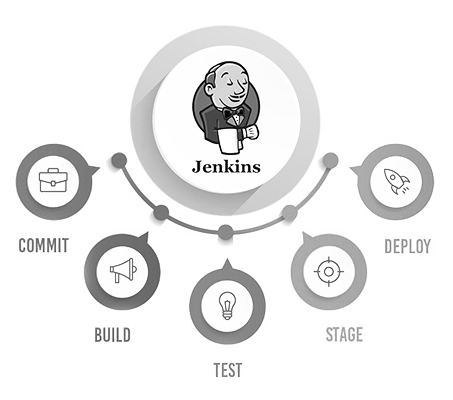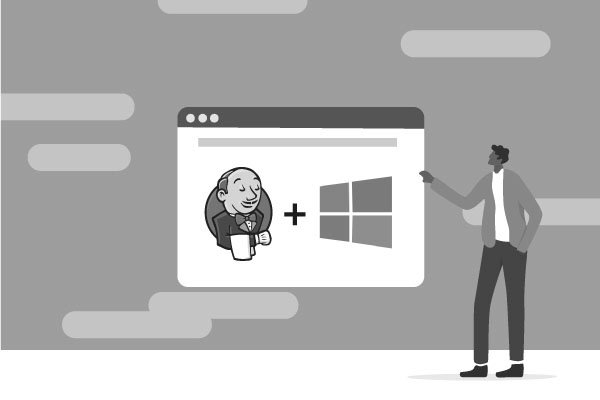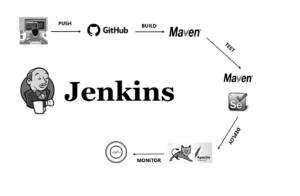Introduction:
Jenkins is a server-based automation platform. It automates software development and facilitates continuous delivery. It runs on servlet containers and is based on an open-source architecture. To learn more about the Use Of Jenkins, read our complete tutorial. We’ll show you how to install and use the tool to get the most out of your software development projects. And don’t forget to check out our other articles on the Use Of Jenkins for more tips and tricks.

Pipelines are crucial to the continuous delivery process. Jenkins supports multiple pipelines to facilitate multi-project development. One pipeline can execute multiple jobs simultaneously. Each pipeline contains a series of jobs. A job chain starts with a pipeline block, which defines executable steps. Next, each stage has a sequence of stage directives. This means a build stage can invoke the make-shell command. Another stage, meanwhile, invokes the deployment step and executes a deployment.
While working for Sun Microsystems, Kawaguchi was instrumental in the development of Jenkins. Hudson debuted in the summer of 2004 and won the support of the locals after Sun bought the company. After Jenkins was forked from Hudson in February 2011 and the Jenkins project persisted, the Hudson community was largely idle. In addition to contributing code and fixing bugs, CloudBees also provides a community newsletter called Continuous Information. The newsletter contains news, articles, and tips for users.
Installation Of Jenkins:
While Jenkins is available for Windows, Linux, and Mac, you’ll have to install it first. This can be difficult if you’re running a Linux machine, but it’s relatively simple. Installing Jenkins on a Windows PC will require you to install Java on your machine. On a Mac, you can download a Homebrew package and then install Jenkins from there. This is an excellent option if you’re on a limited budget, but need a Java 8 virtual machine on your Mac or Linux laptop.

Several other Usage includes its ability to automate workflows. A developer working on multiple environments may need to install an item on each environment. But depending on the number of environments, this task could involve more than a hundred steps. Manual installation is time-consuming and error-prone. The procedures for installing the item can be specified in a Jenkins job, and the system will complete them faster. n In this manner, the pipeline won’t become bogged down while waiting for a batch script to be executed.
Besides being a powerful tool for continuous testing, it also supports configuration management. It supports popular tools like Chef and Puppet, as well as many other continuous deployment tools. This allows Jenkins to release software projects regularly. The system also helps to monitor performance and deployment and can trigger new builds based on events. Despite its simplicity, it has a variety of plug-ins that extend its functionality. This way, the system is highly customizable and flexible.
To install Jenkins, visit localhost:9090. Then, follow the installation instructions. You might be prompted for a username and password. If not, use your administrator account. Alternatively, use port 8080. Depending on your needs, you can install it on another port by changing the ports or enabling a reversible process.
 Open-Source Toll:
Open-Source Toll:
Continuous integration is a critical part of DevOps. Jenkins helps developers to make frequent changes to their projects without worrying about breaking the application. Continuous integration allows developers to update and test their projects regularly. It can be a lifesaver for software testers. They can quickly integrate new changes and deploy fresh builds. Then they can roll back to a previous version if needed. If you want to speed up your software development process, Jenkins can help.
With Jenkins, continuous integration can be automated, enabling you to build and deploy your software as frequently as you want. Its plugin architecture makes it easy to extend the features of Jenkins. For example, you can integrate the various stages of DevOps with Jenkins. Jenkins also requires you to install plugins for specific tools. Luckily, it is open-source, which means that you can write and maintain your plugins to make them more useful for your projects.
You can install it on any of your supported platforms. It runs on Java 8 VMs, including Oracle JRE or OpenJDK. It normally runs as a Java servlet on a Jetty application server. However, it can be run on many other Java application servers. it has also been adapted to run in Docker containers. So, Read-only images of Jenkins can be found in the Docker Hub. You can easily set up a pipeline by using a graphical user interface or writing your code. If want to learn more about cloud services you can read Amazon Web Services
if you find this article helpful don’t forget to share and if you have any questions comment below.

